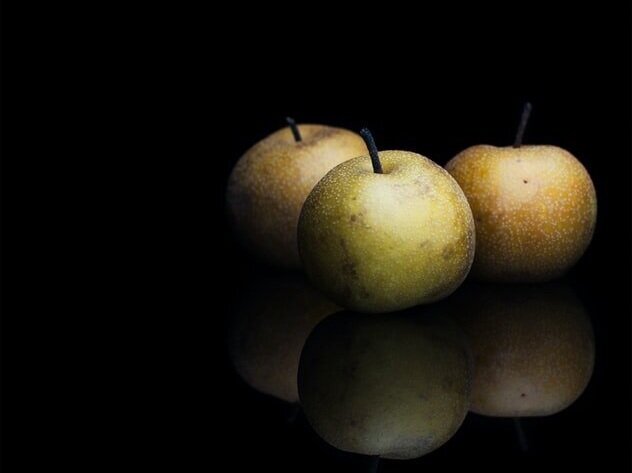Energetics of Asian Pears: Everyone’s New Favorite Fruit
Asian pears have many names, usually based on the region of harvest, but globally they are commonly called the nashi pear. Nashi, 梨, literally means “pear” in Japanese! Many people in Asian counties use these pears as gifts or serve it to guests. During the Edo Period in Japan, they were thought to ward off evil and misfortune and were planted near gates and corners of properties. In South Korea, they even have a museum dedicated to the Asian pear called The Naju Pear Museum!
Varieties
Asian pears are native to China, Taiwan, Japan, and Korea. They are now cultivated in many East Asian countries, Australia, Greece, and parts of California and Washington. The most commonly grown in the US is the Japanese variety, and are a round shape like an apple. The less commonly grown Asian pear is the Chinese variety and it is by far the best tasting of all the Asian pears! The Chinese pear is shaped more like a traditional pear, but has creamy white-colored flesh and is VERY juicy! It can sometimes be found in Asian Markets in the US. Asian pears are classified into two groups. Most belonging to the Akanashi (‘Russet pears’) group, and have yellowish-brown rinds. While the others belong to the Aonashi (‘Green pears’) group and have yellow-green rinds.
Depending on where you live Asian Pears are available from early July until winter and their peak time will be between September and October.
How to Choose and Store
When picking your Asian pears look for ones that are very fragrant and unbruised, with little to no brown spots. Always be careful when handling, as Asian pears are very fragile and can bruise easily! Unlike traditional pears, Asian pears are actually hard and do not soften because they are harvested ripe. Therefore they should be fairly firm when gently squeezed.
Since they are harvested ripe, they have a longer shelf life than other pears. They will stay fresh for about 1 week at room temperature or up to 3 months stored in the fridge!
Nutrition
Asian pears are a good source of essential vitamins, particularly vitamins C and vitamin K. Vitamin C has two main functions in the body; it helps make collagen, a protein that keeps your bones from being too brittle, and has antioxidant functions to keep your tissues healthy. Vitamin K also has two main functions; it ensures that you can form blood clots and it allows your body to make proteins needed for bone mineralization. Asian pears are also a good source of the minerals copper and manganese. Both minerals help support body functions by helping your cells produce energy, and they also help with tissue health by playing a role in collagen synthesis and maturation. Manganese also keeps your bones healthy, while copper nourishes the brain.
Energetics
Asian pears are cool in temperature and have a sweet and slightly sour flavor. In general, pears have a positive effect on the Lungs, as they help to cool any signs of Lung heat, stops coughing, and promote healthy moistness while expelling pathogenic mucus. Pears also help to soothe and moisten a dry throat and other signs of dryness throughout the body. Their coolness helps to quench thirst from heat conditions. They have also been used in the treatment of skin injuries or disorders, constipation from heat, loss of voice, and even inflammation of the gallbladder.
Caution: People with poor digestion from deficiency should not consume pears, as their cold nature can further damage their digestive function.
Hot and Sour Chicken Nashi Stir-fry
Ingredients
1 – 2cm stalk lemongrass (white part), finely sliced
1 – 2cm piece ginger, peeled and diced
juice of 1 large lime
1 tsp fish sauce
1 tsp palm or brown sugar
1 large green chili (optional)
2 large (450g) chicken breast fillets
2 large Nashi
Preparation
Combine the lemongrass, ginger, lime, fish sauce, sugar, and chili into a medium bowl. Mix well. Slice chicken into strips and toss in marinade. Slice Nashi into thin wedged strips.
Drain chicken, reserving marinade. Heat a large non-stick pan or wok and fry chicken until golden. Add Nashi and continue cooking for 2 minutes. Pour over marinade, toss well until hot, then serve.
Tip: the marinade can be made in advance, and the chicken marinated overnight
Source
http://www.nashiaustralia.com.au/stirfry-recipe.html
Mateljan, George. The World’s Healthiest Foods: Essential Guide for the Healthiest Way of Eating. George Mateljan Foundation: Seattle, 2007. Print.
Pitchford, Paul. Healing with Whole Foods: Oriental Traditions and Modern Nutrition. North Atlantic Books: Berkeley, 1993. Print.



